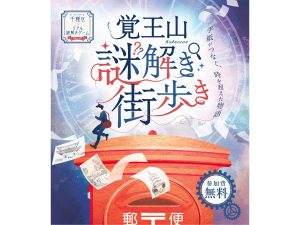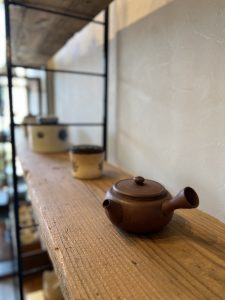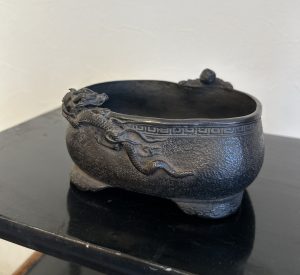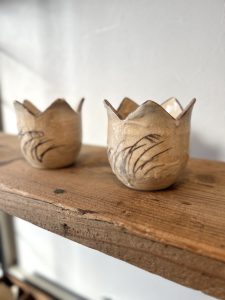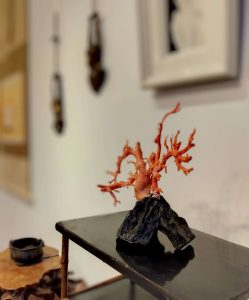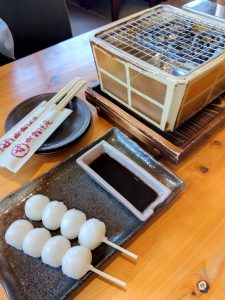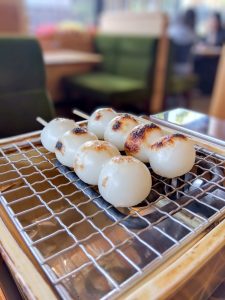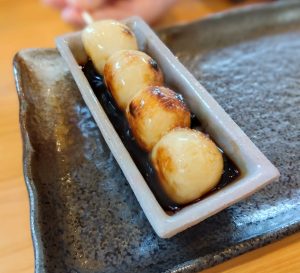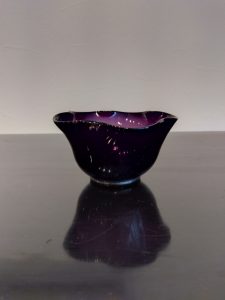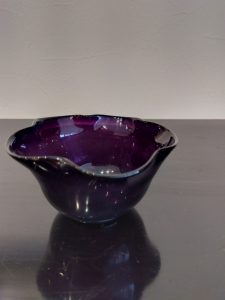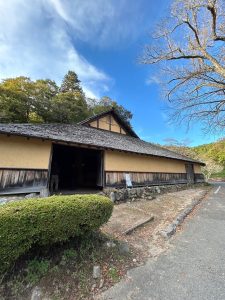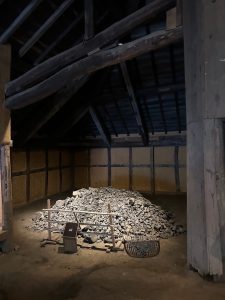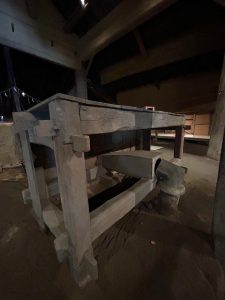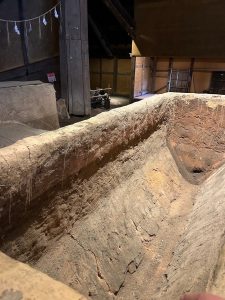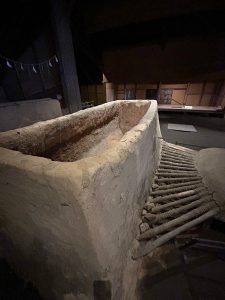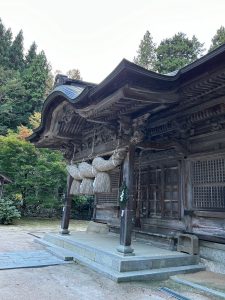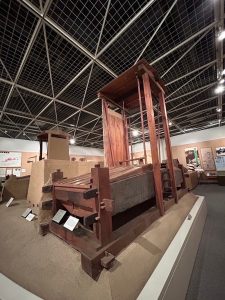今一番気になっているドラマです(愛知県名古屋市千種区姫池通 骨董買取 古美術風光舎)
2024.12.15
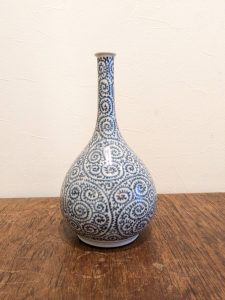
日本近代化の遺構として世界文化遺産に登録された人工の島「端島(軍艦島)」。
長崎港から船で約40分のところに位置する小さな海底炭坑の端島は、岩礁の周りを埋め立てて造られた人工の島です。岸壁が島全体を囲い、高層鉄筋コンクリートが立ち並ぶその外観が軍艦「土佐」に似ていることから「軍艦島」と呼ばれるようになりました。
最盛期の1960年には約5300人もの人が住み、当時、日本一の人口密度を誇っていました。最盛期にはなんと、東京都の約17.5倍にもなったそうです。 国内最古の高層RC造(鉄筋コンクリート)アパートが建設され、「30号棟」は軍艦島上陸クルーズで、今もなおその姿を見ることができるそうです。
当時、軍艦島の鉱員の給料は高く、各家庭では当り前のようにテレビを所有していて、その普及率は、全国平均が10%だった頃、ほぼ100%。島内には小中学校や病院などを完備、映画館やパチンコホールなどの娯楽施設もあり生活の全てを島内で賄うことができたそうです。
端島炭坑の石炭はとても良質で、隣接する高島炭坑とともに日本の近代化に大きく貢献しました。しかし、主要エネルギーが石炭から石油へと移行したことにより衰退の一途をたどり、1974年に閉山。島民はさまざまな思いを胸に島を去り無人島となりました。
そして、2015年7月世界文化遺産「明治日本の産業革命遺産 ~製鉄・製鋼、造船、石炭産業~」として正式登録されました。
序盤は、現代と過去が入れ替わりすぎてよく分からないなと思いながら観ていたのですが、主人公・鉄平の島を思う気持ちや、仕事に誇りを持ち、命がけで作業をされていた事は、前回放送の鉄平が坑道ポンプを締めるシーンに表れていた気がします。ネタバレになりますが、前回の放送で、いづみ=朝子だということが分かりました。
鉄平は記憶喪失になり失踪したのか、炭鉱内の事故で死亡したのか、リナを追ってきたヤクザに連れ去られたのか、願わくば、悲劇的展開にならないで欲しいですが、写真の唐草文様のように渦巻く内容になることでしょう。今一番続きが気になっています。
ではでは、また。(スタッフT)
I look forward to watching the Sunday theater “Diamonds in the Sea” every week. I think it is an interesting drama in terms of visuals, setting and story. Although it is a fiction, I wonder if it was like this in real life? Or was it even more severe than that? I watch it with the thought, “What would it have been like in real life?
Hashima Island (Gunkanjima) is a man-made island that has been registered as a World Heritage site as a relic of Japan’s modernization.
Located about 40 minutes by boat from Nagasaki Port, Hashima Island, a small undersea coal mine, is a man-made island created by reclaiming land around a reef. It is called “Gunkanjima” (meaning “warship island”) because of its resemblance to the warship “Tosa” in appearance, with its quays surrounding the entire island and lined with high-rise reinforced concrete buildings.
At its peak in 1960, the island was home to approximately 5,300 people, making it the most densely populated island in Japan at the time. At its peak, the population was a whopping 17.5 times that of Tokyo. The oldest high-rise RC (reinforced concrete) apartment building in Japan was built, and “Building 30” can still be seen today on a Gunkanjima landing cruise.
At that time, miners on Gunkanjima were paid well, and each household owned a television as a matter of course, with a penetration rate of almost 100%, when the national average was 10%. The island was equipped with elementary and junior high schools, hospitals, and other facilities, including movie theaters, pachinko halls, and other entertainment venues, making it possible to provide for all aspects of daily life on the island.
The coal from the Hashima Island coal mine was of very high quality, and together with the adjacent Takashima coal mine, contributed greatly to the modernization of Japan. However, the mines began to decline as the main energy source shifted from coal to oil, and closed in 1974. The islanders left the island with a variety of feelings, and the island became uninhabited.
Then, in July 2015, it was officially registered as a World Heritage Site, “Industrial Revolution Heritage of Meiji Japan: Iron and Steel Making, Shipbuilding, and Coal Industry.
In the beginning, I was watching the show thinking that the present and the past were so interchanged that I couldn’t really understand it, but I think the main character Teppei’s feelings for the island and the fact that he was proud of his work and risked his life for it were expressed in the scene in the previous episode when he tightened the tunnel pump. Spoiler alert, we learned in the last broadcast that Izumi = Asako.
Did Teppei disappear due to amnesia, was he killed in an accident in the mine, or was he taken away by the yakuza who came after Rina?
Hopefully, this will not turn out to be a tragic development, but I am now most anxious for the rest of the story.
See you later. (Staff T)
*****************
ご実家の整理やお片付けなどをされている方のご相談などが多くございます。
お片付けなどくれぐれもご無理のないようになさってくださいませ。
風光舎では古美術品や骨董品の他にも絵画や宝石、趣味のお品など様々なジャンルのものを買受しております。
お片付けをされていて、こういうものでもいいのかしらと迷われているものでも、どうぞお気軽にご相談下さいませ。
また風光舎は、出張買取も強化しております。ご近所はもちろん、愛知県内、岐阜県、三重県その他の県へも出張いたします。
まずは、お電話お待ちしております。
愛知県名古屋市千種区姫池通
骨董 買取【古美術 風光舎 名古屋店】
TEL052(734)8444
10:00-18:00 OPEN
#出張買取#骨董#古美術#骨董品#絵画#版画#茶道具#刀剣#彫刻

